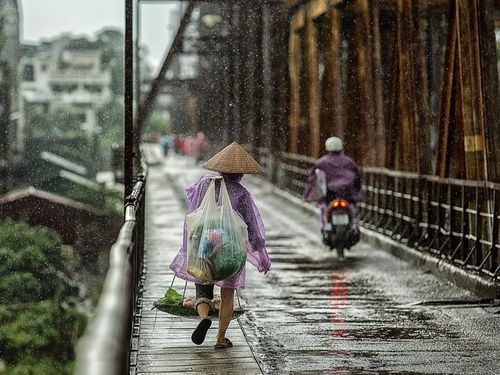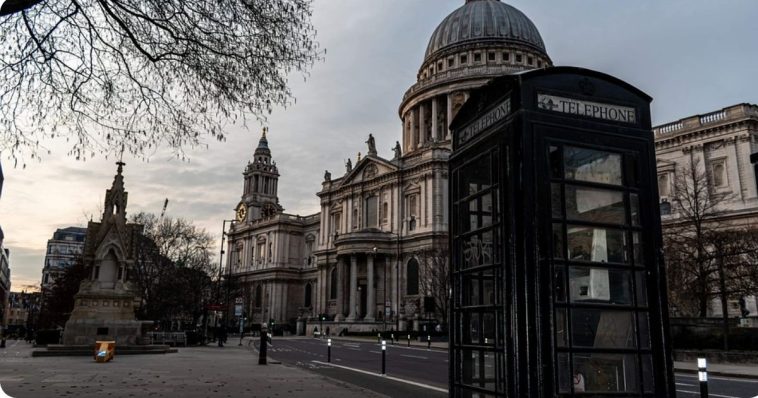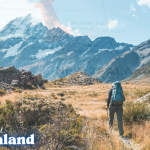In a world obsessed with bucket lists and Instagrammable views, a new kind of traveler is venturing off the glossy brochure path. Instead of sun-drenched beaches or historic cathedrals, they’re drawn to sites marked by tragedy, mystery, and the shadows of human history. Welcome to the realm of dark tourism—a haunting, thought-provoking journey through the world’s most macabre and mysterious destinations.
What Is Dark Tourism?

Dark tourism is traveling to places linked to death, tragedy, and the darker chapters of human history. These sites range from former concentration camps and battlegrounds to abandoned asylums, natural disaster zones, and infamous crime scenes. What unites them is the powerful emotional atmosphere they carry—places where the past hasn’t entirely let go, and where the weight of human experience still lingers in the air.
While it might sound morbid at first, dark tourism isn’t simply about chasing chills or indulging in the macabre. For many, it’s a deeply reflective experience. It encourages visitors to confront the uncomfortable truths of history, examine the fragility of life, and gain a deeper understanding of collective memory, resilience, and moral responsibility. It balances on a delicate line: too casual, veers into exploitation; too solemn, and may feel overwhelming. At its best, dark tourism offers a unique, emotionally rich lens through which to view both past and present—and to consider what should never be forgotten.
Why People Are Drawn to the Dark
Something is compelling about places with shadows—sites where history’s most tragic, mysterious, or unsettling moments unfolded. But why would anyone choose to stand where others have suffered, or walk through the remnants of a place long abandoned? The answer lies in a complex mix of curiosity, reflection, and a yearning for emotional truth. For some, these journeys are about honoring the past and understanding the darker sides of humanity that textbooks only touch on. For others, it’s a personal confrontation with mortality, grief, or fear—a way to process the unspoken parts of life through the stories left behind.
Dark tourism also taps into a more profound psychological need: the craving for meaning beyond the postcard-perfect scenes. These places carry narratives that are raw, layered, and emotionally charged. A ghost town frozen in time, a prison turned museum, or a site of genocide forces visitors to slow down, listen, and wrestle with uncomfortable truths. The discomfort becomes part of the experience that evokes empathy, awe, or introspection. In a world of curated travel and filtered realities, dark tourism offers something radically different: a visceral, unsanitized connection to the past that lingers long after the trip.
Haunting Global Hotspots of Dark Tourism
Here are some of the world’s most infamous—and intriguing—dark tourism destinations:
1. Chernobyl, Ukraine
Once a bustling Soviet city built to house workers of the nearby nuclear power plant, Pripyat was abruptly evacuated in 1986 following one of the worst atomic disasters in history. Within hours, life halted, leaving behind a ghost town suspended in radioactive silence. Today, Chernobyl and Pripyat have become iconic dark tourism destinations, where guided tours lead visitors through abandoned schools, overgrown streets, and the skeletal remains of a rusted amusement park that never got to open.
The atmosphere is haunting—equal parts dystopian and surreal. Nature has slowly reclaimed what humanity left behind, with trees growing through buildings and wild animals roaming freely through deserted avenues. More than just a chilling time capsule, Chernobyl stands as a sobering monument to technological hubris and human error. It invites reflection on the cost of progress, nature’s resilience, and the fine line between innovation and catastrophe.
2. Auschwitz-Birkenau, Poland
Auschwitz-Birkenau stands as one of the most harrowing and emotionally charged dark tourism destinations in the world. Once the largest of the Nazi concentration and extermination camps, this site witnessed the systematic murder of over a million people—most of them Jews—during the Holocaust. Today, it serves not just as a preserved historical site, but as a solemn memorial to the victims of unimaginable cruelty. Visitors walk through the infamous “Arbeit Macht Frei” gate, past weathered barracks, crematoria ruins, and haunting displays of confiscated belongings—suitcases, shoes, eyeglasses—that speak to the lives so brutally cut short.
The weight of the place is palpable, forcing a silence that transcends words. Yet within its somber atmosphere lies an urgent call for remembrance and education. Auschwitz-Birkenau is not visited lightly—it demands emotional engagement and historical reflection. It confronts humanity with its darkest capabilities while honoring the resilience and stories of those who suffered. As a UNESCO World Heritage Site, it plays a vital role in preserving the memory of the Holocaust, ensuring that future generations recognize the devastating consequences of hatred, indifference, and totalitarianism.
3. The Catacombs of Paris, France
Beneath the polished charm of Paris’s grand boulevards and cozy cafés stretches a haunting underworld—the Catacombs, a subterranean tomb housing the bones of over six million souls. Born from the urgent need of 18th-century Paris, this eerie maze was carved into abandoned limestone quarries—a haunting response to the growing health crisis brought on by the city’s overflowing cemeteries. In a surreal blend of utility and artistry, workers meticulously relocated and stacked human remains, forming chilling yet oddly poetic arrangements that now line the shadowy walls of these hidden corridors.
Walking through the Catacombs is like stepping into a quiet, eerie reflection on life, death, and time. Skulls and femurs are stacked with almost ceremonial care, making the space macabre and strangely poetic. It echoes the Latin phrase memento mori—a quiet reminder of mortality—gently suggesting that death remains an inescapable truth even in a city famed for its light and romance. The Catacombs aren’t just a morbid curiosity; they’re a compelling meditation on the fragility of life and the layers of history buried, quite literally, beneath our feet.
4. Aokigahara Forest, Japan
At the foot of Mount Fuji, Aokigahara Forest unfolds as a stunning natural sanctuary shrouded in an atmosphere of deep, lingering sorrow. Often referred to as the “Suicide Forest,” it has gained international attention for its tragic association with self-inflicted death. The dense canopy and quiet, moss-covered floor give the forest an eerie, almost soundless atmosphere, so calm that it can feel otherworldly. Despite its haunting reputation, Aokigahara is a sacred place in Japanese folklore and has long been linked to spiritual significance and mystery.
Local authorities have taken numerous steps to address the site’s history, including signs encouraging people to seek help and highlighting the value of life. While tourism is permitted, visitors are urged to approach the forest with the utmost respect and sensitivity, acknowledging the forest not as a spectacle but as a space touched by deep human suffering. Aokigahara is not just a dark tourism site; it’s a poignant reminder of mental health struggles, the quiet pain that often goes unseen, and the need for compassion in travel and life.
5. Pompeii, Italy
Frozen in time by the catastrophic eruption of Mount Vesuvius in 79 AD, Pompeii offers an extraordinary glimpse into daily life in ancient Rome—and the sudden, unforgiving power of nature. Entire streets, villas, temples, and shops were buried under layers of volcanic ash, preserving them in astonishing detail. What makes Pompeii especially haunting are the plaster casts of its citizens, captured in their final moments—crouching, clinging, or shielding themselves—silent witnesses to a disaster that unfolded in mere hours.
Beyond its archaeological grandeur, Pompeii is a powerful reminder of civilization’s vulnerability. The site offers more than ruins; it provides context of how people lived, what they valued, and how swiftly everything can change. The eerie stillness over the city contrasts with its former vibrance, turning a walk through Pompeii into a sobering meditation on life, death, and the forces beyond human control. It’s a place where history feels alive, not triumph but tragedy.
6. The Killing Fields, Cambodia
On the quiet outskirts of Phnom Penh, the Killing Fields stretch—solemn landscapes that silently testify to one of Cambodia’s darkest and most devastating historical periods. Under the brutal Khmer Rouge regime from 1975 to 1979, an estimated two million people were executed or died from starvation, torture, and forced labor. Choeung Ek, the most well-known of these fields, contains mass graves where countless victims were buried. At the heart of the site stands a striking memorial stupa filled with over 8,000 human skulls, many visibly marked by trauma, offering a stark and sobering reminder of the lives lost.
Visiting the Killing Fields is a profoundly emotional and confronting experience, often accompanied by an audio guide that shares survivors’ testimonies and historical context. The atmosphere is heavy with grief, yet the site serves a vital purpose: to remember, to educate, and to ensure such atrocities are never repeated. It is not just a destination but a space of reflection, resilience, and acknowledgment of the suffering endured by a nation still healing. While painful, the visit is an essential encounter with humanity’s darkest capabilities—and its enduring will to remember and rebuild.
Ethical Travel or Morbid Voyeurism?
One of the ongoing debates around dark tourism is its ethical complexity. Can visiting a site of suffering ever be respectful? When done thoughtfully, yes. The key lies in intent and context. Seeking to learn, understand, and honor the past vastly differs from snapping selfies in inappropriate settings.
Many dark tourism sites are also important sources of education and preservation. Entrance fees often support local economies or fund preservation efforts. In this way, dark tourism can serve as a bridge between remembrance and responsibility.
The Psychology Behind the Fascination
Psychologists propose that dark tourism engages a deep-seated human curiosity about death, tragedy, and the mysteries that lie beyond everyday experience. It gives travelers a safe space to confront fear, grief, and the uncanny while maintaining emotional distance. For some, it’s a way to find meaning in suffering. For others, it’s a chance to explore the limits of human resilience, cruelty, and survival.
Why the Darkest Places Still Deserve the Spotlight
Dark tourism isn’t for everyone—and it shouldn’t be. It demands a different kind of traveler: one willing to step into uncomfortable truths and engage with history’s heavy, human weight. But for those who choose to go, these journeys often leave behind more than souvenirs. They offer perspective, awareness, and a stark reminder that not all stories are light and bright—and that’s precisely why they matter.
Because sometimes, the places least talked about are the ones that should never be forgotten.



